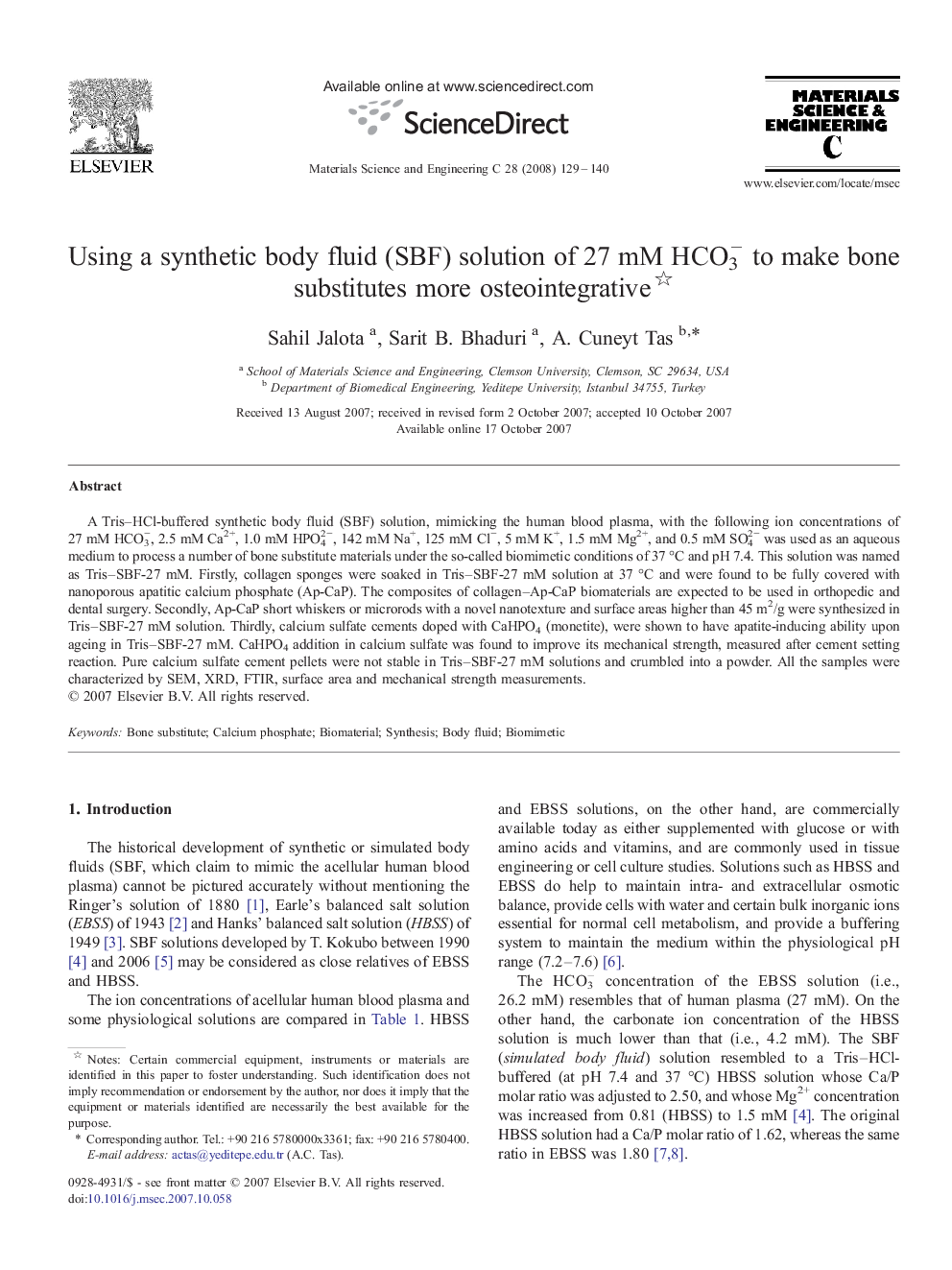| Article ID | Journal | Published Year | Pages | File Type |
|---|---|---|---|---|
| 1430068 | Materials Science and Engineering: C | 2008 | 12 Pages |
A Tris–HCl-buffered synthetic body fluid (SBF) solution, mimicking the human blood plasma, with the following ion concentrations of 27 mM HCO3−, 2.5 mM Ca2+, 1.0 mM HPO42−, 142 mM Na+, 125 mM Cl−, 5 mM K+, 1.5 mM Mg2+, and 0.5 mM SO42− was used as an aqueous medium to process a number of bone substitute materials under the so-called biomimetic conditions of 37 °C and pH 7.4. This solution was named as Tris–SBF-27 mM. Firstly, collagen sponges were soaked in Tris–SBF-27 mM solution at 37 °C and were found to be fully covered with nanoporous apatitic calcium phosphate (Ap-CaP). The composites of collagen–Ap-CaP biomaterials are expected to be used in orthopedic and dental surgery. Secondly, Ap-CaP short whiskers or microrods with a novel nanotexture and surface areas higher than 45 m2/g were synthesized in Tris–SBF-27 mM solution. Thirdly, calcium sulfate cements doped with CaHPO4 (monetite), were shown to have apatite-inducing ability upon ageing in Tris–SBF-27 mM. CaHPO4 addition in calcium sulfate was found to improve its mechanical strength, measured after cement setting reaction. Pure calcium sulfate cement pellets were not stable in Tris–SBF-27 mM solutions and crumbled into a powder. All the samples were characterized by SEM, XRD, FTIR, surface area and mechanical strength measurements.
